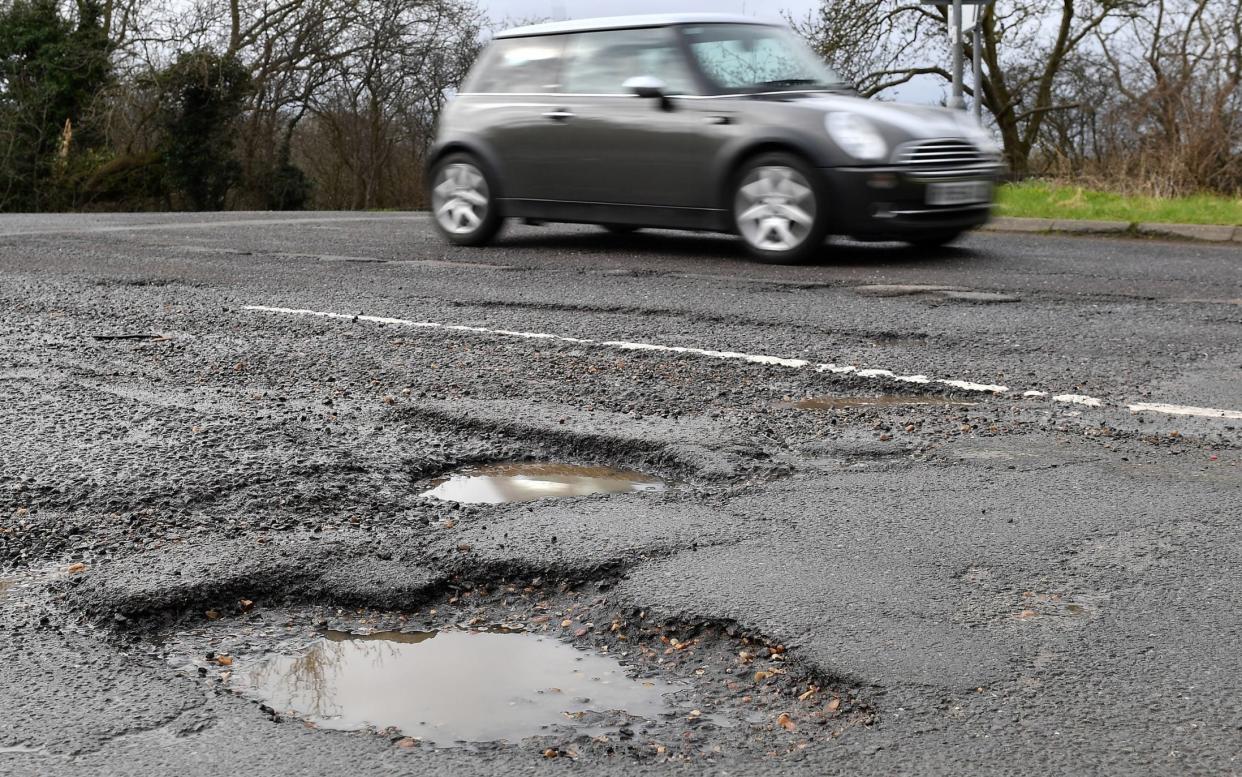Fifth of roads will become undriveable in next five years ‘if pothole crisis not fixed’

One in five roads could be undriveable in five years unless billions of pounds are pumped into fixing the pothole crisis, experts have warned.
In its annual survey of the state of the country’s roads, the Asphalt Industry Alliance (AIA) found that nearly 37,000 miles of road, that’s 18 per cent, were in poor condition and had less than five years of life remaining without intervention.
The 28th successive “Alarm” report estimated that more than £14 billion was now needed to fix all of England and Wales’ potholes and get the country’s roads back up to standard.
This marks a £2 billion jump from last year’s Alarm report and shows that despite the government ploughing additional funds into fixing the pothole problem, the funding gap is widening. In 2012, this figure was above £9 billion.
As part of the report, AIA ranks the local roads as good, having more than 15 years’ of life remaining, adequate, having between five and 15 years of life remaining, and poor, less than five years remaining.
It has found that just over half of all local roads are in good structural condition, while the remainder, more than 100,000 miles, may need to be rebuilt in the next fifteen years without adequate maintenance measures.
Last week as part of his Budget, Jeremy Hunt, the chancellor, revealed that he would be providing an additional £200 million one-off payment to fix potholes on English roads.

The funding was in addition to the Government’s annual £500 million pothole fund, and would mean £700 million would go to fixing these roads in 2023/24.
But AIA chair Rick Green said that this was just not enough, and would do little to improve the overall structural conditions of the nation’s local roads.
He said: “It represents around 20 per cent of the average shortfall in English local authorities’ annual budgets and will do little to improve overall structural conditions and stem further decline.
“We all appreciate that there are difficult choices to make with demands and pressures on the public purse coming from every area, but not investing in local road maintenance only leads to worsening conditions.”
The Alarm survey estimates that the average shortfall in local roads’ budgets increased by 20 per cent to £7.7 million per authority last year, with this equating to an overall £1.3 billion shortfall across the country.
Last week, the Telegraph reported on research by the County Councils Network which found that next year 85 per cent of councils planned to cut the amount of road maintenance schemes carried out due to inflationary pressures.
One in 24 road bridges substandard
The AIA report also revealed that the number of potholes filled across the 12 month period was only 1.4 million, down from the 1.7 million filled in 2021/22. However, this still equates to one pothole being filled every 20 seconds.
The gap between full surfacing work and filling potholes is far longer, with the AIA estimating that the average frequency of roads being resurfaced is around 116 years.
The figures behind the country’s pothole crisis comes as RAC Foundation research found that one in 24 road bridges across the country were substandard and unable to carry heavy vehicles.
Of the 72,000 bridges councils were responsible for maintaining, it was found that 3,090 (4.3 per cent) were substandard and unable to carry vehicles over 44 tonnes.
Steve Gooding, director of the RAC Foundation, said: “The numbers illustrate how important it is for significant sums of money to be spent tackling at least the higher priority work.
“Whether it is potholes or bridges there is only so long that councils can continue to patch things up before bigger cracks literally start to appear in the road network.”

 Yahoo News
Yahoo News 
